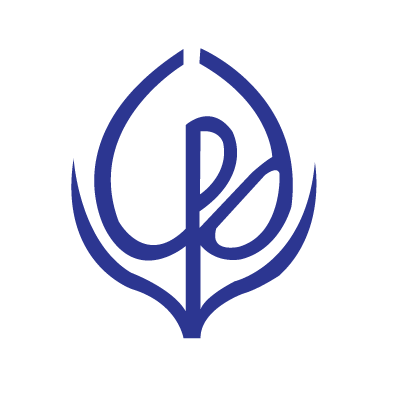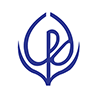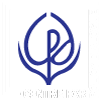Originally posted in The Financial Express on 7 April 2025
Health spending has become a vital area of public investment regardless of a nation’s economic standing. The United Nations’ 2030 Sustainable Development Agenda recognises the paramount significance of healthcare. Specifically, Sustainable Development Goal (SDG) 3 emphasises the need to ensure healthy lifestyles and promote well-being for all individuals, regardless of age, on a worldwide scale. The health system of Bangladesh is in a critical state due to a lack of government prioritisation and a lack of good governance. The health sector’s infrastructure is weak, and its governance is in disarray. In 2017, the nation had one hospital bed for every 1,196 individuals (BBS, 2019). As of 2017, only 5.1 per cent of health facilities in Bangladesh had emergency transportation, 21.5 per cent had alcohol-based disinfectant, 27.5 per cent had medical masks, 34.5 per cent had lab facilities, 43.1 per cent had regular electricity, 55.1 per cent had soap and water, 83.7 per cent had paracetamol oral suspension, 86.3 per cent had thermometers, and 90.1 per cent had improved water sources (NIPORT, ACPR, and ICF, 2018). In addition to insufficient funding and tools, healthcare institutions in Bangladesh lacked sufficient personnel to give proper treatment. In 2018, the nation had one registered physician for every 1,581 individuals (BBS, 2019). As of 2017, 28 per cent of health facilities in Bangladesh had specialists, 59.1 per cent had general practitioners, and 79.7 per cent had nurses (NIPORT, ACPR, and ICF, 2018). Therefore, substantial investment from the government, private sector and international development partners is required to transform the health sector and build a healthy future for Bangladesh. Without such investments, the ambitious goals outlined in SDG 3 will remain unfulfilled. Along with higher allocation for the health sector, effective utilisation of resources is also crucial.
OVERVIEW OF THE HEALTH BUDGET: The allocation for health as a share of the total budget decreased from 5.33 per cent in FY24 to 5.20 per cent in FY25. The allocation for health as a share of gross domestic product (GDP) has declined slightly from 0.75 per cent in FY24 to 0.74 per cent in FY25. Such allocation is marginally lower than the average allocation of 0.75 per cent of GDP during FY16 to FY24.
Budget allocation for health has been less than 1 per cent of GDP for the past 20 years, indicating that healthcare has been one of the least prioritised sectors for the government. The budget allocation on health per person has increased by only Tk 186, from Tk 2,227 in 2023 to Tk 2,413 in 2024. The Urban Primary Health Care Services Delivery Project, a government social safety net programme (SSNP) initiative aimed at ensuring the delivery of quality primary health care (PHC) services to urban populations, had its budget allocation drastically reduced from Tk 439.38 crore in FY24 to Tk 180.13 crore in FY25. Notably, the portion of the budget allocated to non-development expenditures has consistently been higher than that allocated to development expenditures. This trend suggests that a larger share of the health budget is directed towards operational costs rather than improvements to the healthcare system itself. This could potentially impact the health system’s capacity to invest in infrastructure, technology, and other areas that directly contribute to improved health outcomes, highlighting the need for a more balanced approach to budget allocation.
A comparison of Bangladesh’s government expenditure on health with that of its regional neighbours or other least developed countries (LDCs) reveals a rather gloomy picture.
Bangladesh had one of the highest out-of pocket spending from 2000 to 2021. In 2000, Bangladesh had an out-of-pocket expenditure equal to 61.82 per cent of current health expenditure, which rose to 74 per cent of current health expenditure in 2020. This indicates that a substantial portion of healthcare costs in Bangladesh is borne directly by individuals, bypassing public or private health insurance mechanisms.
While all countries have fluctuations in out-of-pocket expenditure across the years, a downward trend is generally observed over the two decades. This suggests a potential increase in health insurance coverage or government-funded healthcare initiatives in some countries. However, the data for Bangladesh shows a slight upward trend in recent years, which warrants further investigation. In 2021, Bangladesh’s out-of-pocket expenditure on health per capita at purchasing power parity was the 8th highest among 45 LDCs (World Bank, 2024). Bangladesh’s out-of-pocket expenditure as a percentage of current health expenditure was 73 per cent of current health expenditure in 2021 and showed an increasing trend for the past two decades, whereas the trend is decreasing for countries such as India, Pakistan, Bhutan, Nepal and Sri Lanka (World Bank, 2024). Bangladesh’s expenditure on health as a share of GDP was the lowest among 45 LDCs in 2021 – no other LDC has spent less on health than Bangladesh in 2021 (World Bank, 2024). Moreover, in Bangladesh, the proportion of the population pushed below the US$ 2.15 poverty line due to out-of-pocket expenditure on healthcare increased from 3.11 per cent in 2010 to 3.74 per cent in 2016.
The piece is excerpted from Centre for Policy Dialogue (CPD)’s Recommendations for the National Budget FY2025-26, Released to the Media on March 16, 2025, Dhaka. www.cpd.org.bd



